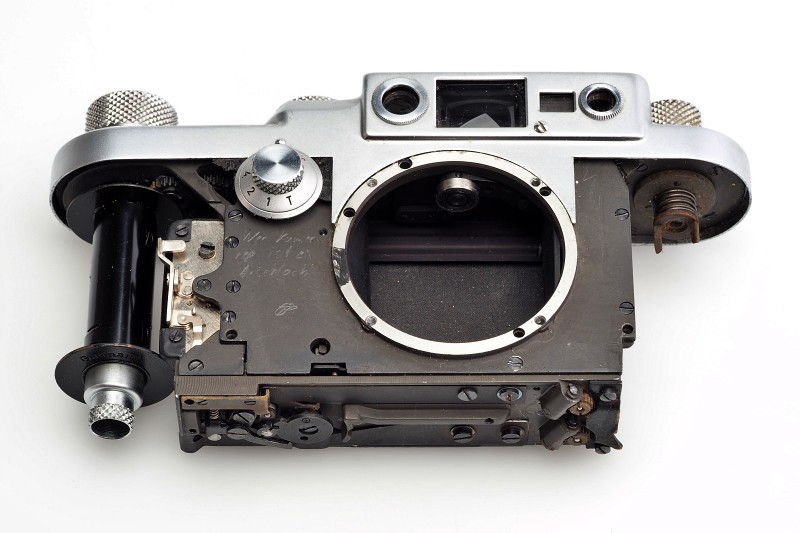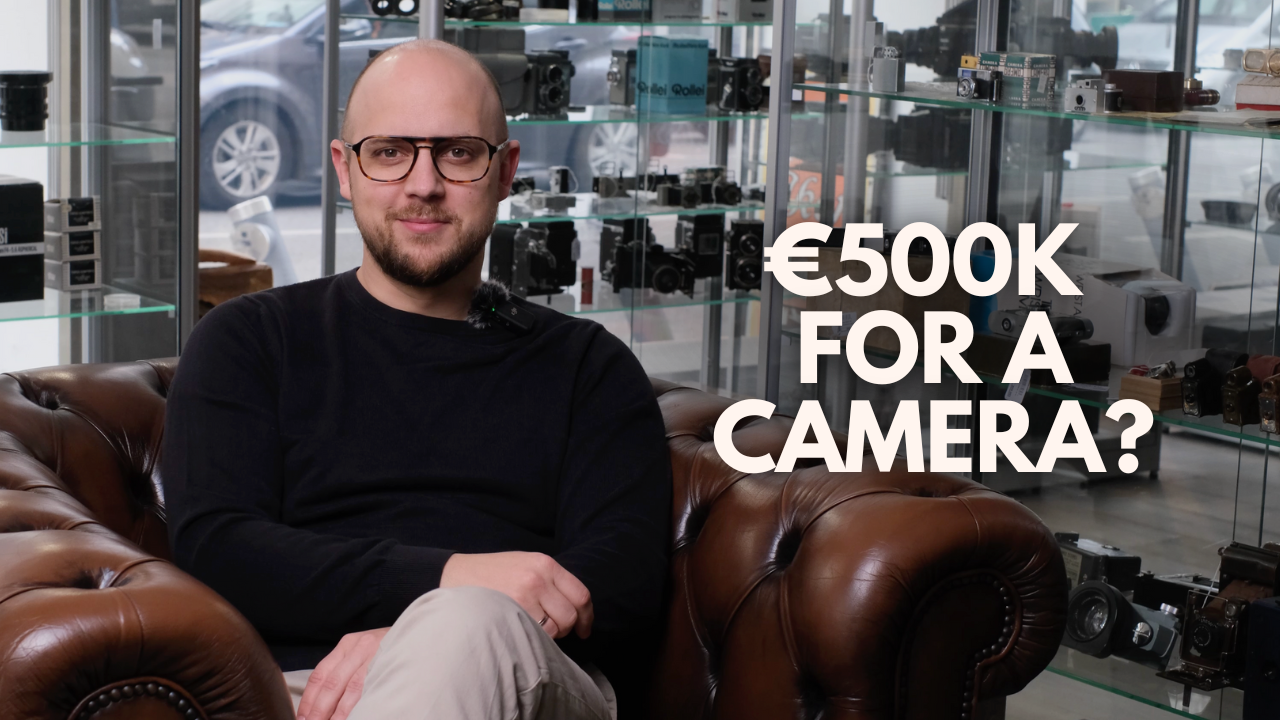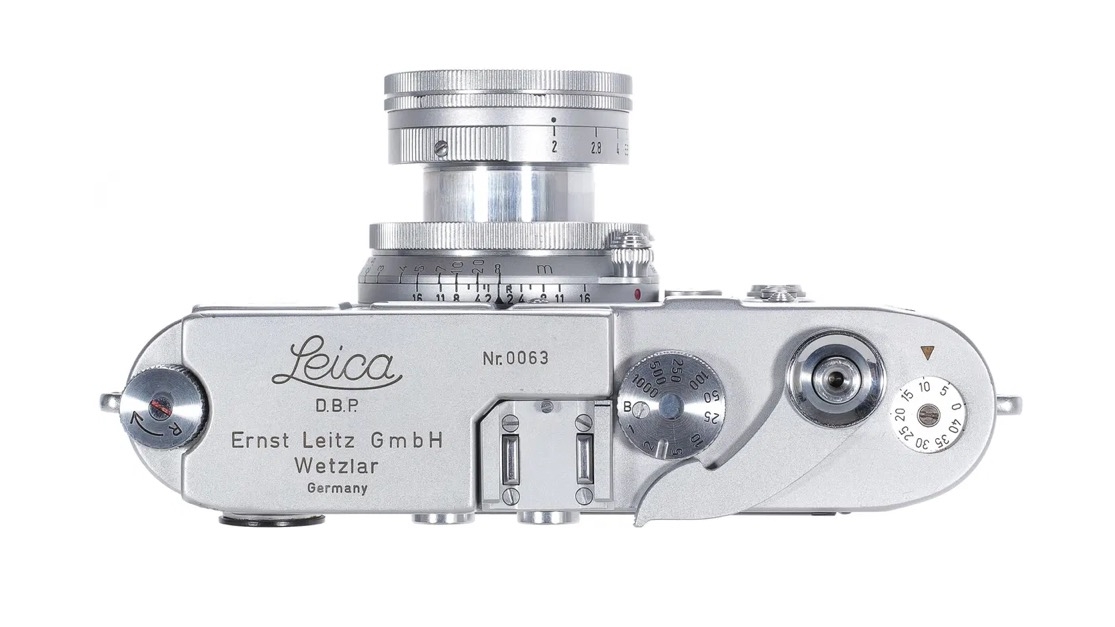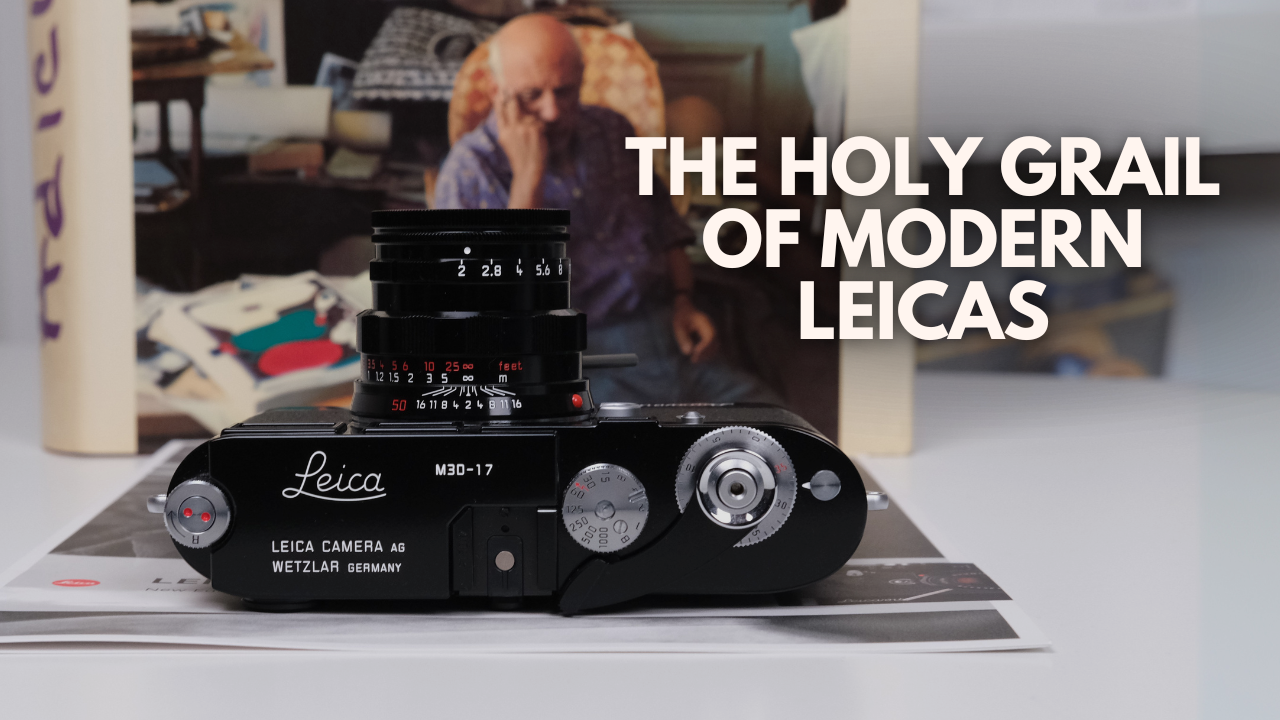Leica M2 vs. Leica MP - a comparative review by Robin Jacob
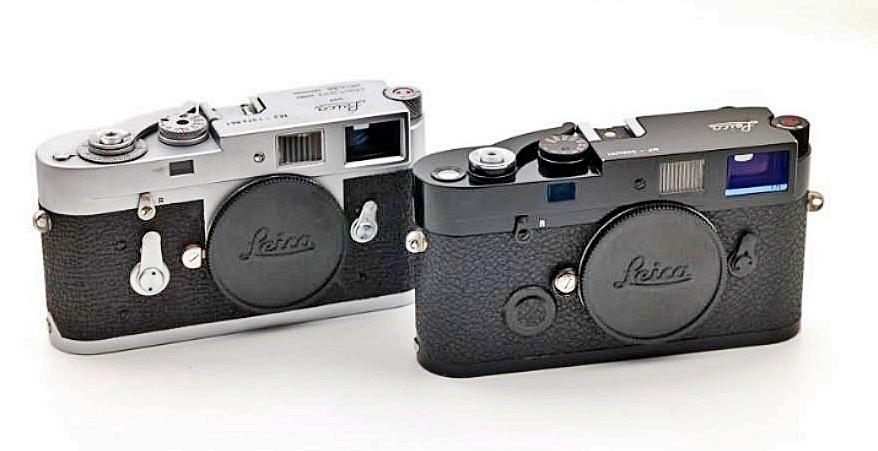
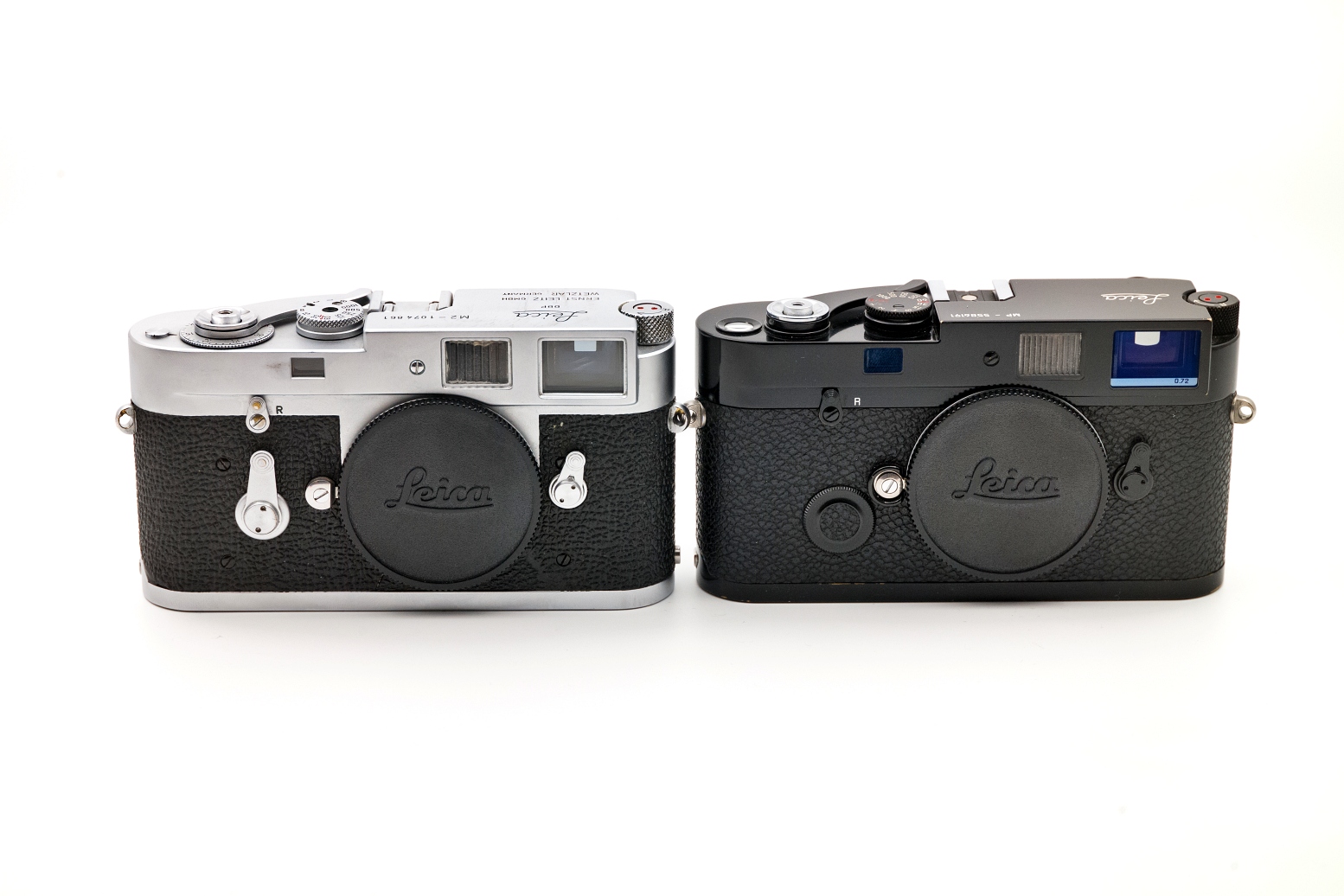
Leica M2 (left) and Leica MP (right)
Introduction
45 years is a very long time in modern day technology. In that timespan we came from the invention of the seatbelt to the first self-parking cars. And it was around the same time as these two inventions came to the car market, when Leica released two cameras which are often considered true classics in the M-camera lineup: The 1958 Leica M2 and the 2003 Leica MP. So, what makes these cameras so special, how do they compare, and is the MP really a much more modern camera, considering Leica is a brand being known to stick close with their traditions? Let’s have a quick dive into both cameras and see which one might be the right choice for you if you’re looking into buying either of the two.
Leica M2
The Leica M2 was introduced as a more affordable alternative to the Leica M3, which was released four years earlier. The cost-cutting was mainly noticeable in the external frame counter disk, which had to be reset manually when loading a new roll of film. The M3 already had an automatic frame counter window on the top plate next to the shutter button, which was kept for later models in the M-lineup. Besides that, the cheaper build quality is barely noticeable from a user’s perspective and the Leica M2 is still built to an extremely high level of precision. The M2 introduced a viewfinder with less magnification (0.72 vs. 0.91 in the M3), which allowed Leica to add wider frame lines at the cost of reducing focusing accuracy with longer lenses. The M2 now has single frame lines of 35mm, 50mm and 90mm which are automatically engaged when the lens is mounted. The camera features a similar loading mechanism with a removable take-up-spool as the M3 and earlier Barnack Leicas.
It is no surprise that the M2 quickly became a highly admired camera, being much cheaper than the M3, but built to that same high quality and allowing access to some of the best lenses around.
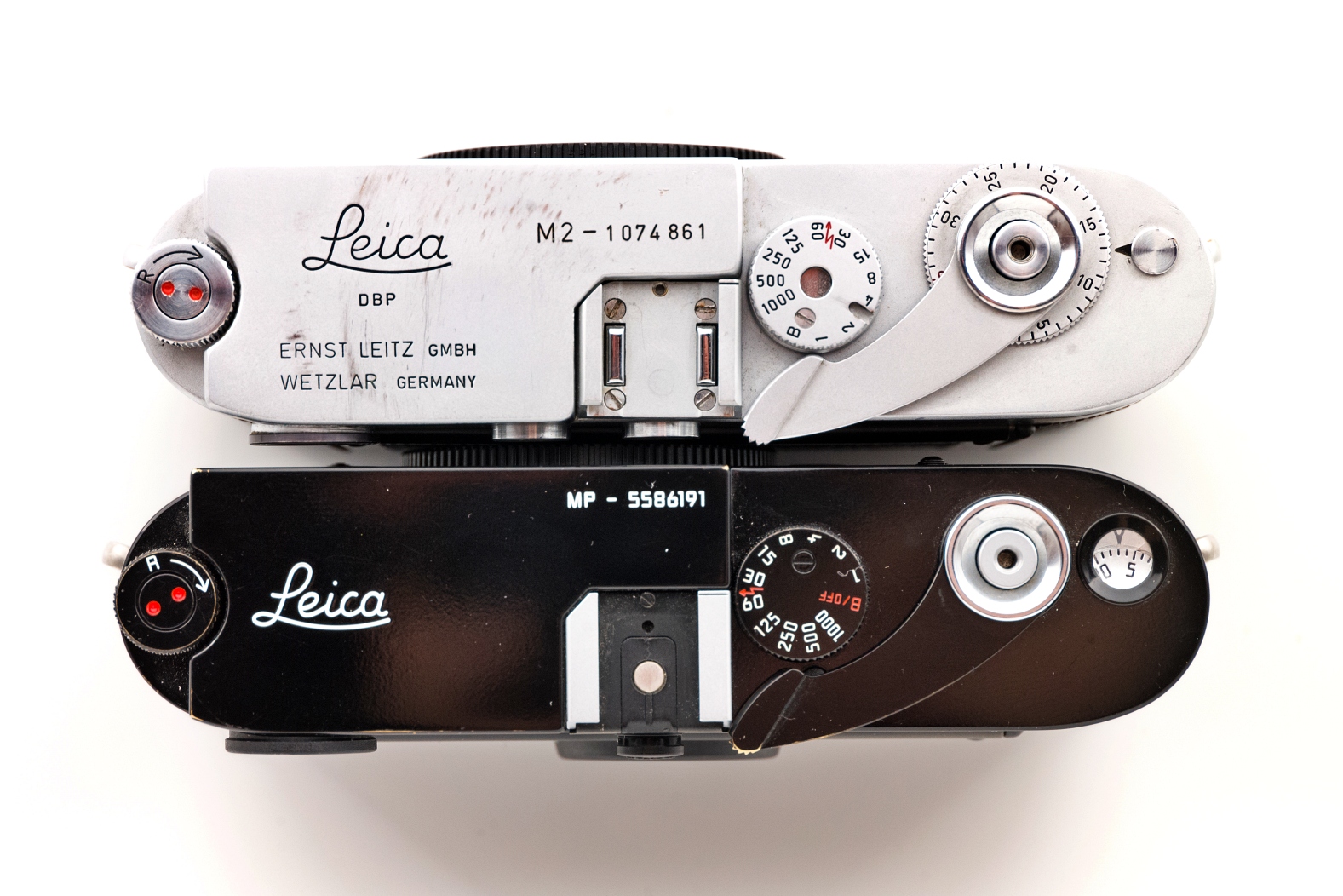
Top view of both cameras: Besides the frame counter disk both cameras look very similar
Leica MP
The Leica MP was introduced in 2003 (Not to be confused with the 1956 Leica MP, which is a highly sought-after and rare piece of Leica history) and can be seen as sort of a “best-of”-Leica camera, picking the parts that have proven reliably over the roughly 50 years of M-mount history at that point. In homage to the M2 and M3, Leica re-introduced the rewind knob, as opposed to the rewind crank which was used from the M4 on, and also brought back the all-metal winding lever without plastic parts, which was also seen in the M4 and later cameras. Because of this, on first sight the MP can be mistaken as a M2 with inbuilt light meter, but there are a couple more subtle changes that we will cover in the next paragraph.
Leica claims the MP stands for “Mechanical Perfection” and calls the camera a “puristic masterpiece”. This shows what Leica is aiming for with that model: The ultimate analogue camera.
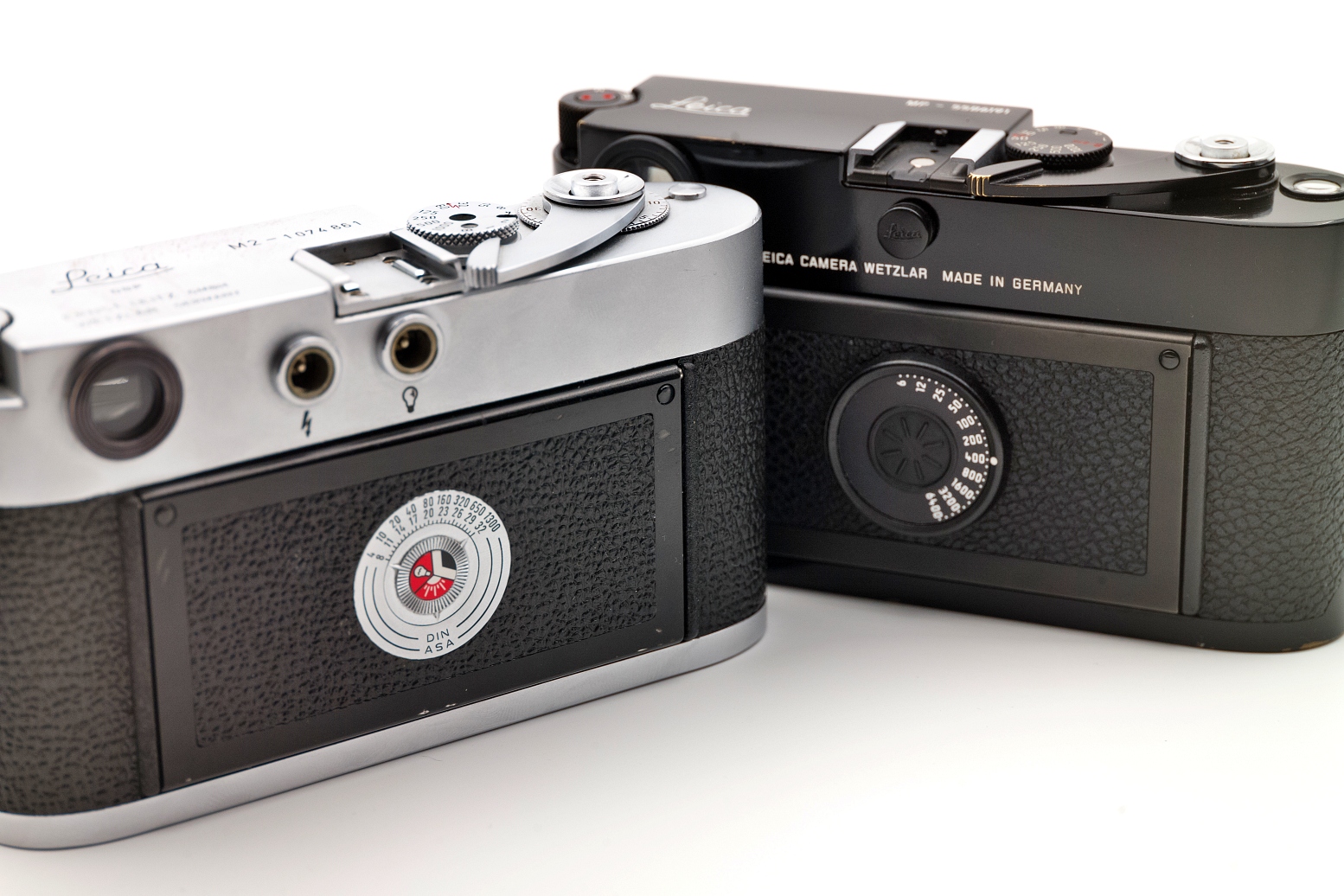
The ISO dial on the M2 is just a film reminder while the one on the MP actually sets the sensitivity of the light meter
Comparing both cameras
Looking at both cameras side-by-side there are two main differences that immediately catch people’s attention: The frame counter on the MP has moved to the inside of the body. On the one hand this gives the camera a cleaner appearance and a less mechanical look. And on the other, this makes the camera a bit easier to use. While it is only a matter of seconds to reset the frame counter when loading a new roll of film, this is one extra step that has to be taken, and if forgotten, results in a wrong frame number while shooting the whole roll.
The other obvious difference between the two cameras is the battery compartment on the front of the Leica MP. While the MP is still a mechanical camera and functions perfectly fine without batteries, the batteries are necessary to power the light meter. The meter itself is based on the same arrow-indicators as the M6, but unlike the M6, the MPs light meter now features three symbols: Arrows for under- and overexposure and introducing a dot in the middle for indicating the correct exposure. This meter is purposely built simple but proven to be extremely reliable and leading to perfect exposures. Also, the batteries (either 2x SR44 or one DL1/3N, all widely available) basically last forever. Metering on the M2 obviously has to be done by using an external light meter or by guessing the exposure. As the battery compartment takes up space on the front of the camera, the MP also has no self-timer while most M2 models do.
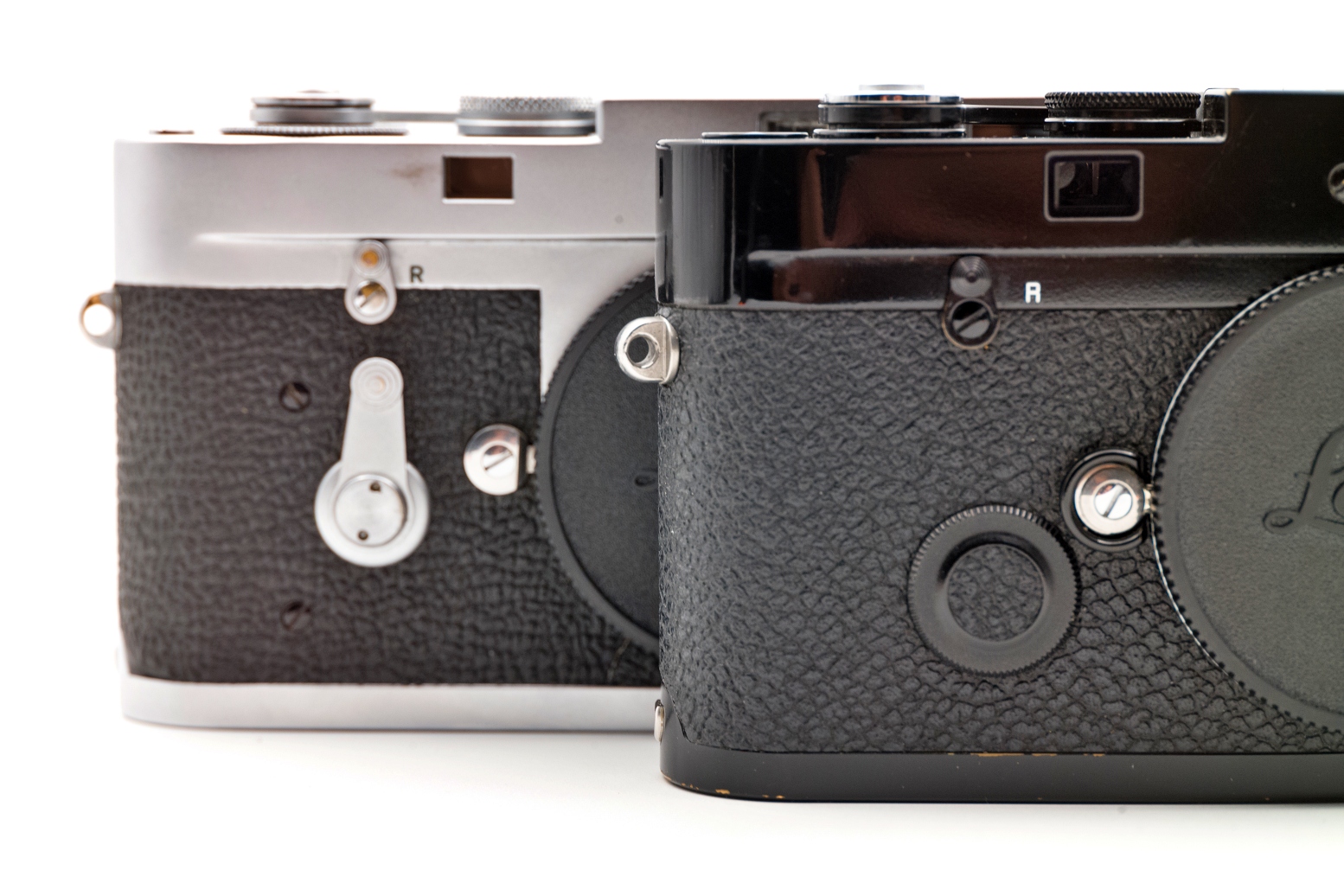
The battery compartment of the MP needs space, so the self-timer had to be sacrificed
If you’re a flash user you should consider that the M2, because of its age, only features a cold shoe and flash must be triggered via flash sync cable. The MP however features a hot shoe, although no TTL capability – if needed this is where you should have a look at the M6 TTL or the M7.
Other differences between the two cameras only become visible when looking in the inside: As mentioned before, the M2 features a removable take-up-spool for loading the film. While this is a fool-proof method and reduces the risk of misloading the film, it takes a considerable amount of time to load a roll of film. Therefore, the MP relies on the rapid load system which was introduced with the Leica M4. After some practise this method is just as safe and much faster than the removable spool. However, there are kits available which allow to upgrade the M2 to a similar rapid load system.
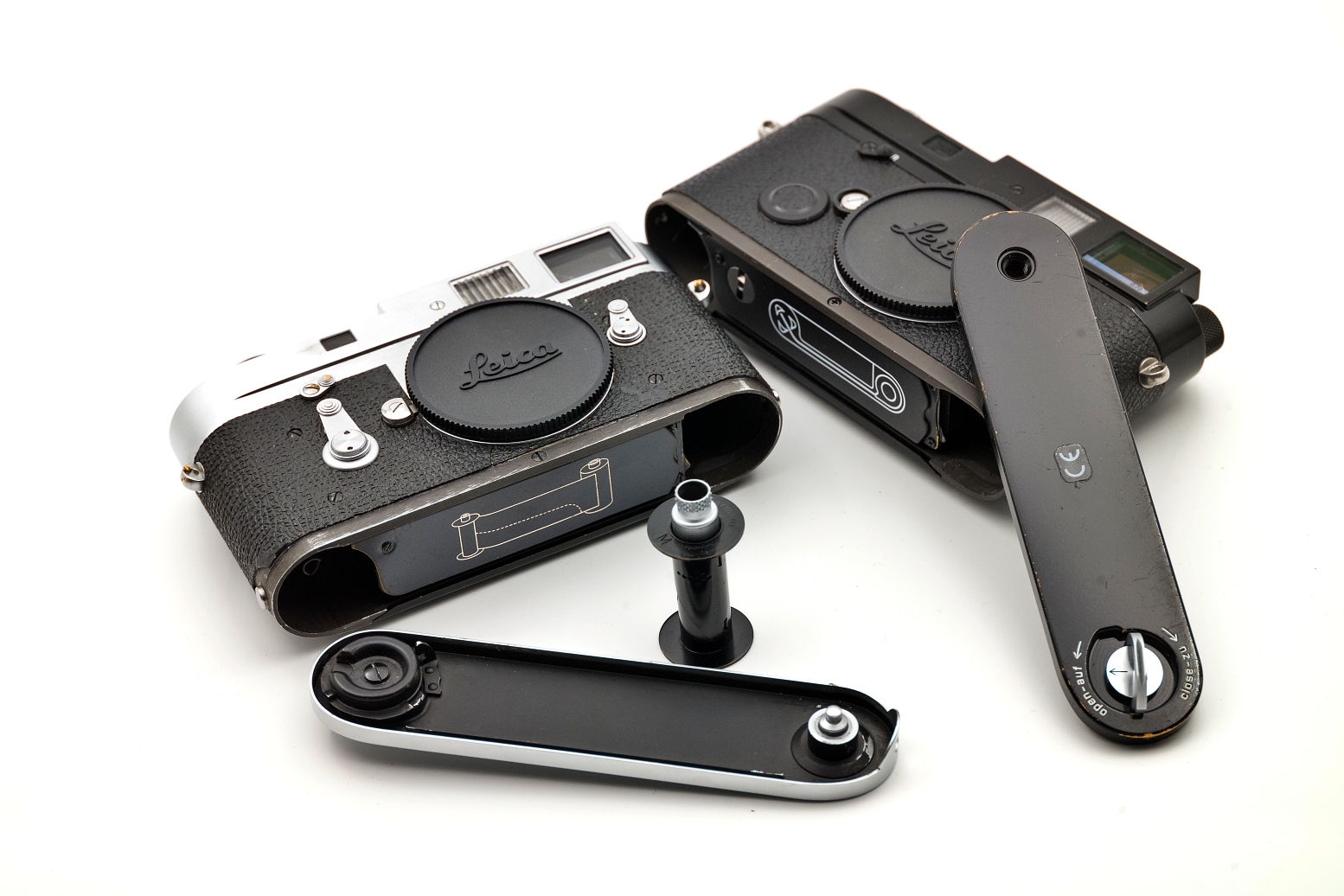
The M2 has a removable spool for film loading while the MP has a much faster rapid load system
The MPs viewfinder also received a major upgrade over the M2. Initially available in three magnifications: 0.58 for wider lenses, 0.72 as normal option and 0.85 for longer lenses, the camera is nowadays only produced with the regular 0.72 viewfinder. The 0.58 and 0.85 can only be found on the used market. In addition, the MP features a coating on the viewfinder windows, eliminating potential flaring when shooting towards the light. With the more basic viewfinder construction of the M2 this can be an issue, however from my experience rather negligible. The difference in frame lines on the other hand can make a huge difference in the shooting experience: While both cameras have a beautifully bright viewfinder with a clear focus patch and sharp frame lines, The MP offers a wider range of lenses to be used. With the regular 0.72 viewfinder the MP displays the frame lines in sets of two: 28-90 / 35-135 / 50-75 while the M2 only offers the above mentioned 35 / 50 / 90. While this can be limiting in the lens selection, this reduced set makes the M2s viewfinder appear much less cluttered and allowing the photographer to focus more on the process itself without any distractions.
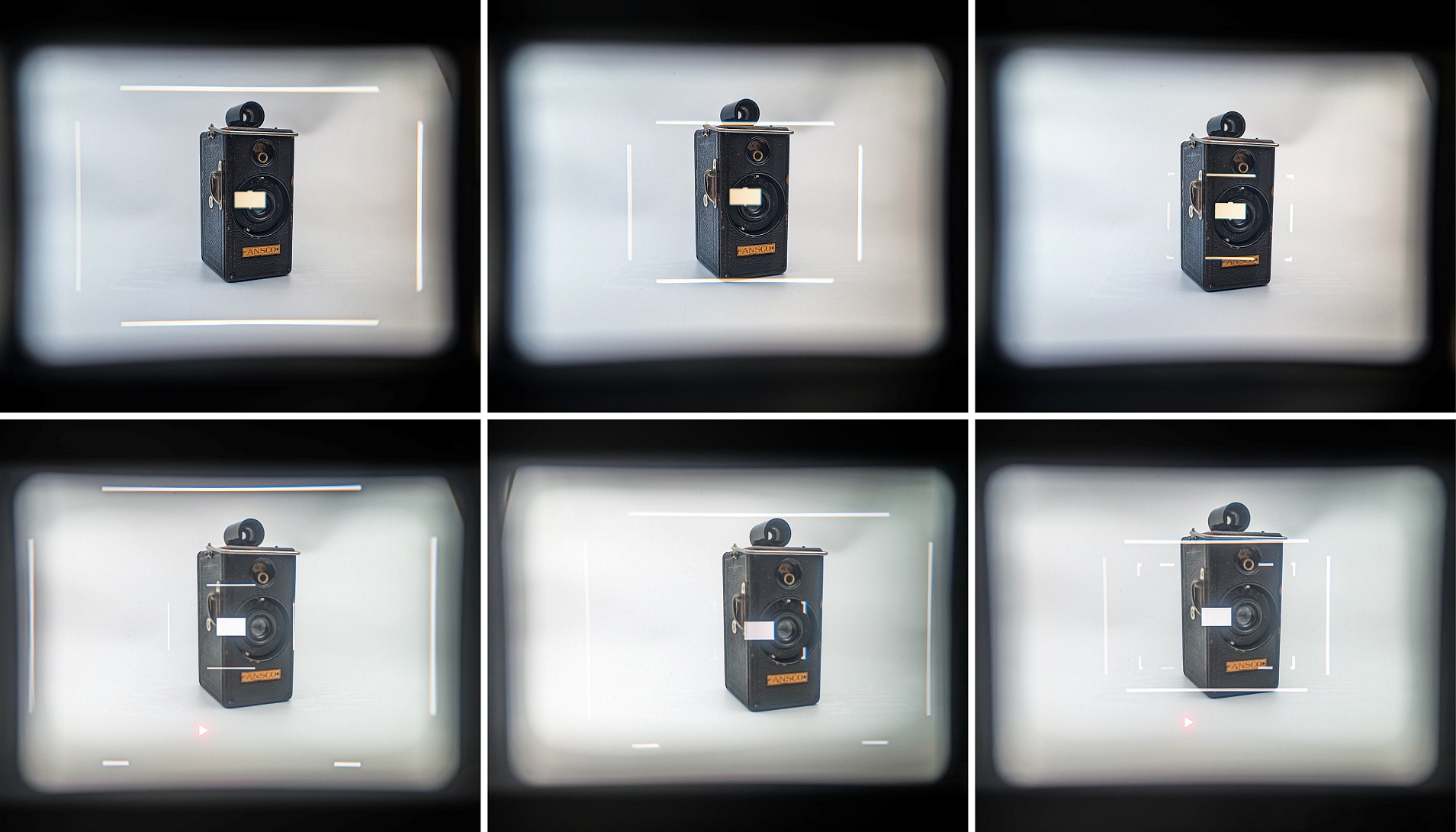
Sets of frame lines for the M2 (top) and the MP (bottom) - you can see the light meter indicating underexposure on the MP.
These photos don’t do justice to the actual viewfinder as in reality both are extremely bright and clear
The next point needs to be mentioned when talking about Leica M cameras as it is one of the most controversial topics around: The black paint. Initially exclusively for press photographers, Leica introduced black paint cameras. The paint, however, was not very wear resistant and quickly showed the brass underneath. Nowadays these black paint cameras with their unique patina are highly desired among collectors, fetching incredible prices. Unfortunately, this also applies to the M2, where only about 2450 cameras were produced in that finish. This leads to prices of original black paint M2s typically fetching way over 20k and making them unattainable for most users. Many repaints exist but they still sell for considerably more than a regular chrome M2, also quality of those repaints can highly differ. This is where black paint fans should have a look at the MP: The MP is still in production and as with the many traditions that the camera picked up, there is also a black paint option available. And while the MP is still more expensive than a regular chrome M2, for most people this is the only option to access an original black paint film Leica.
Even though the M2 was introduced as a more budget-friendly option for photographers, the build quality between the M2 and the MP feels basically the same. Both cameras are manufactured to the highest quality standards and feel solid, yet precise. The bodies are very dense and relatively heavy, being built to take a beating and still last a lifetime. Spare parts for both are widely available and after a proper service even the M2 will feel and function like a brand-new camera despite being about 60 years old.
Conclusion
So, which of the two is the better camera? Obviously, both will give you the same results in terms of image quality and looks, as both take the same lenses and film. So there is no clear answer to that question as this highly relies on personal preference. The one thing I want to stress with this article is that despite being the much younger camera, the MP should not be seen as an upgrade to the M2. Rather these two are different tools that meet different demands. Of course, there are many similarities but in very specific cases one can be preferred over the other: You’re looking for a light meter, more frame lines or a black paint camera? – Go with the MP. You want that more mechanical vintage feel, a purer shooting experience or simply don’t have the budget to go with the MP? – Then go with the M2, you certainly won’t get disappointed. There’s a good reason this camera still ranks among the most desirable ones 64 years after its release. The MP however, is the best choice if you’re looking for a brand-new camera. However you decide, you won’t regret it and you can be sure that the camera can be passed on upon generations.


